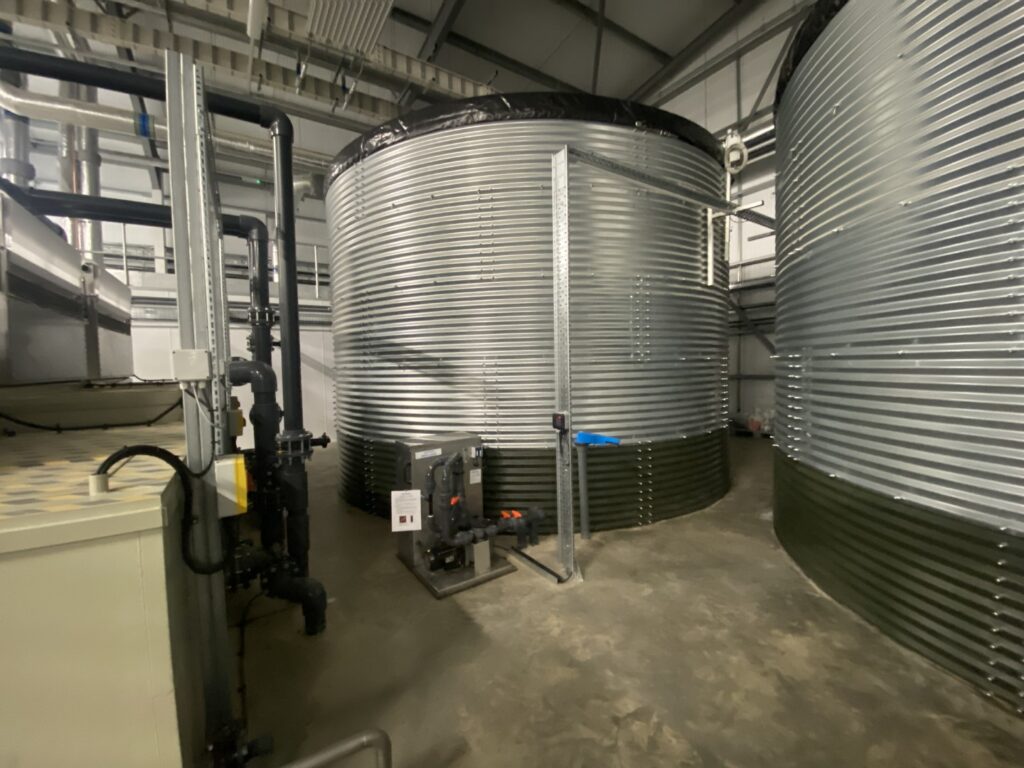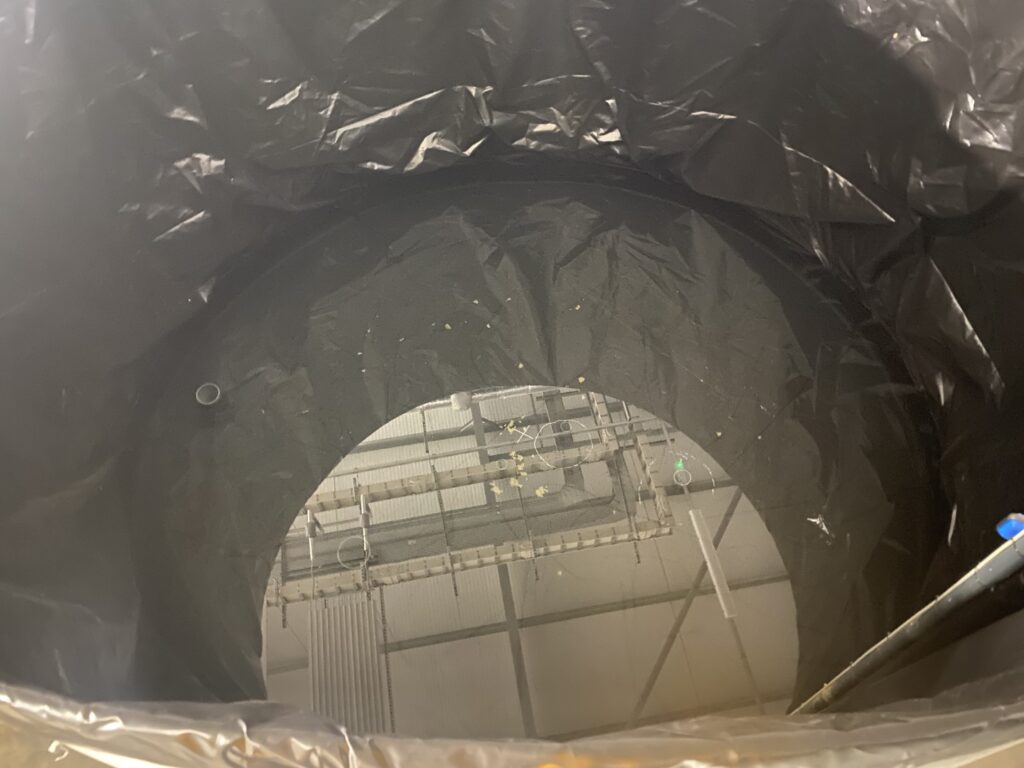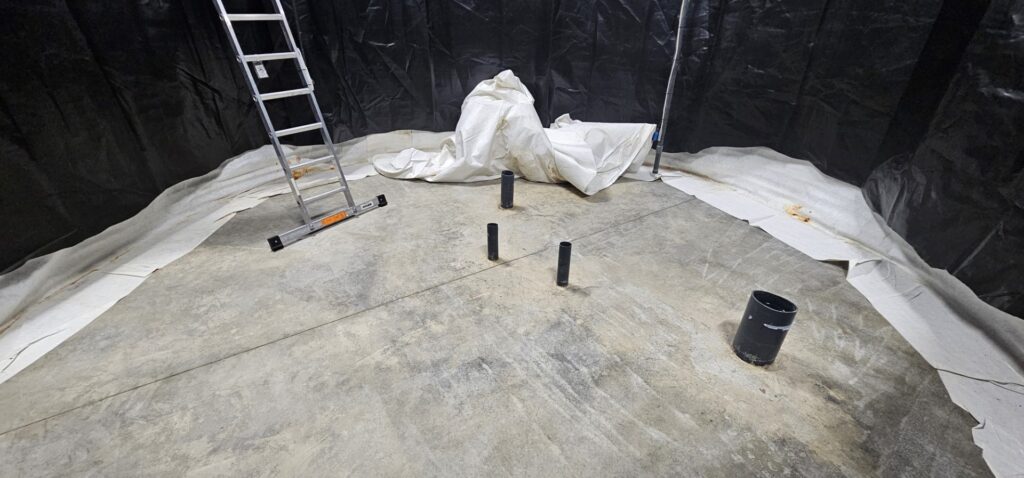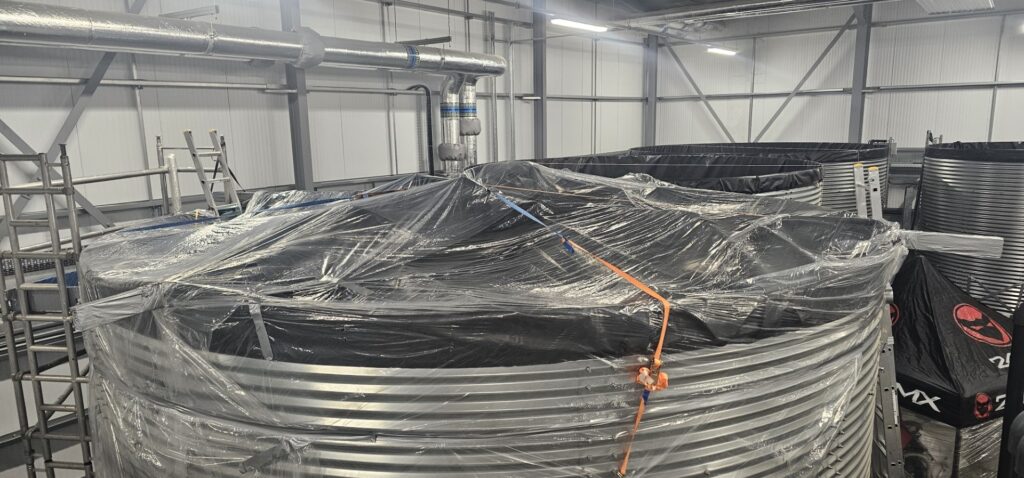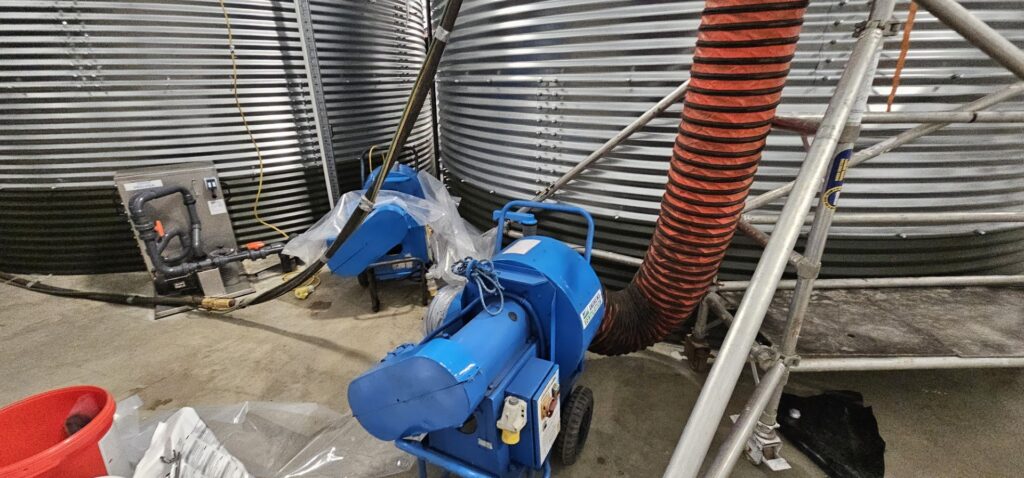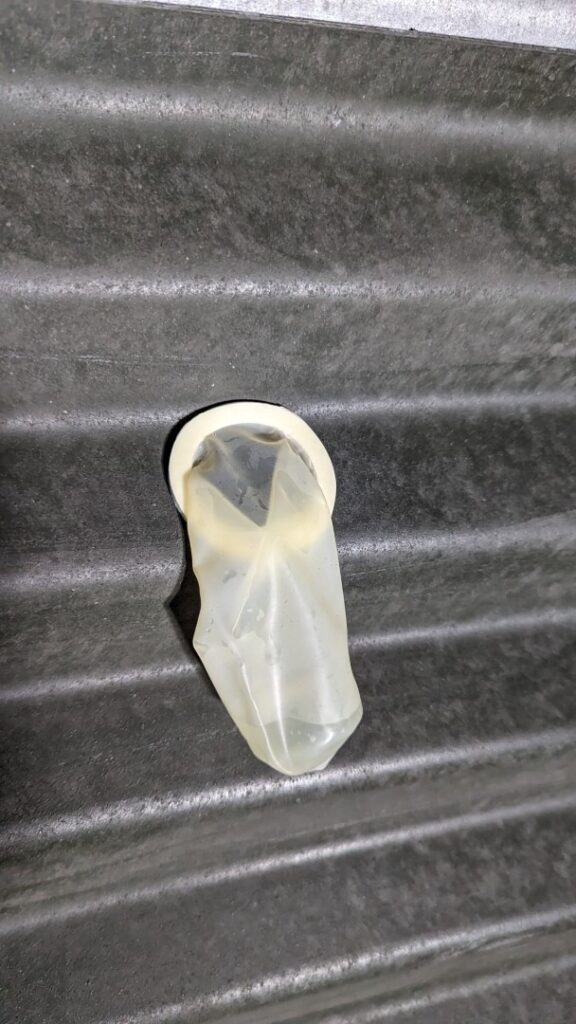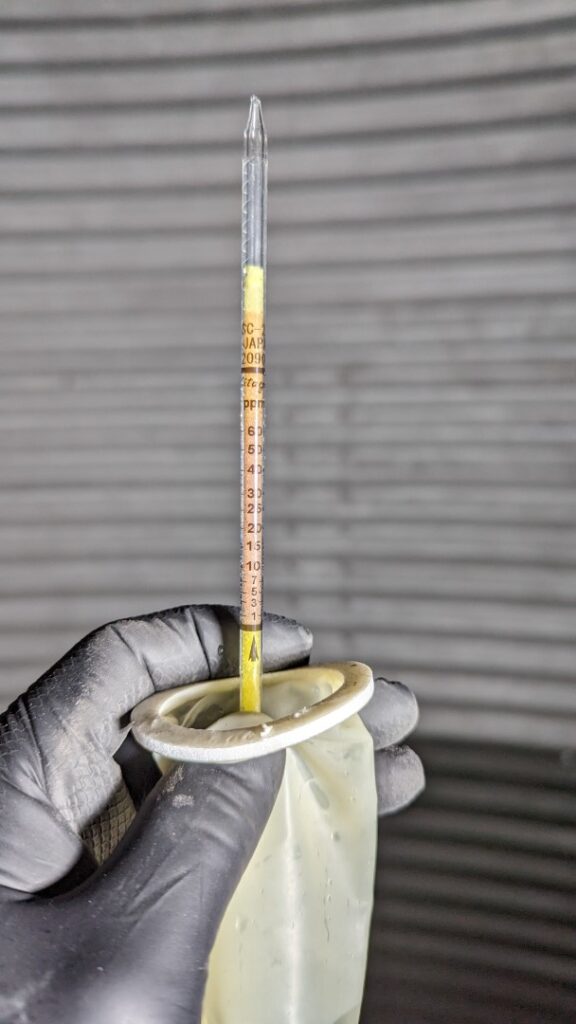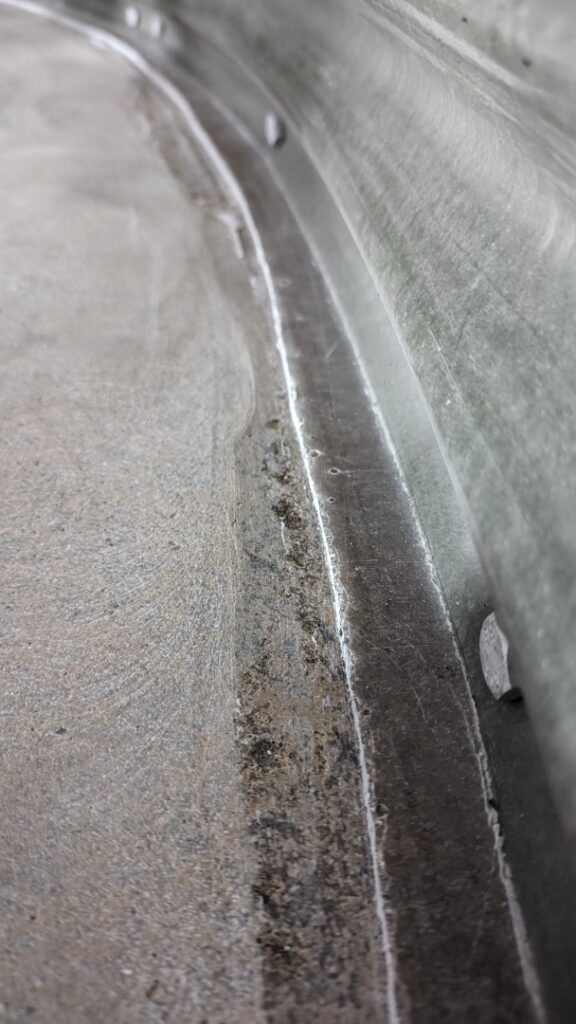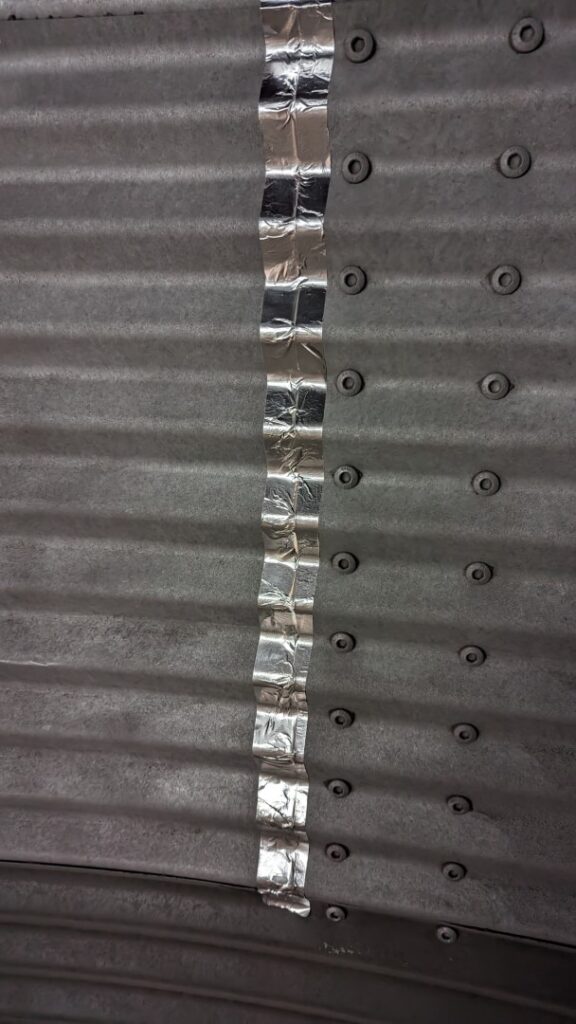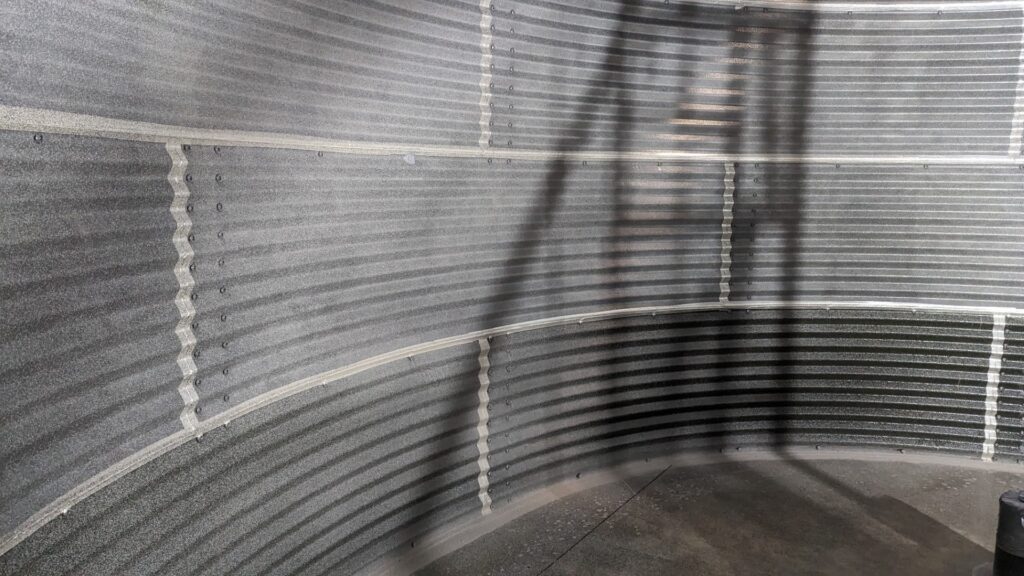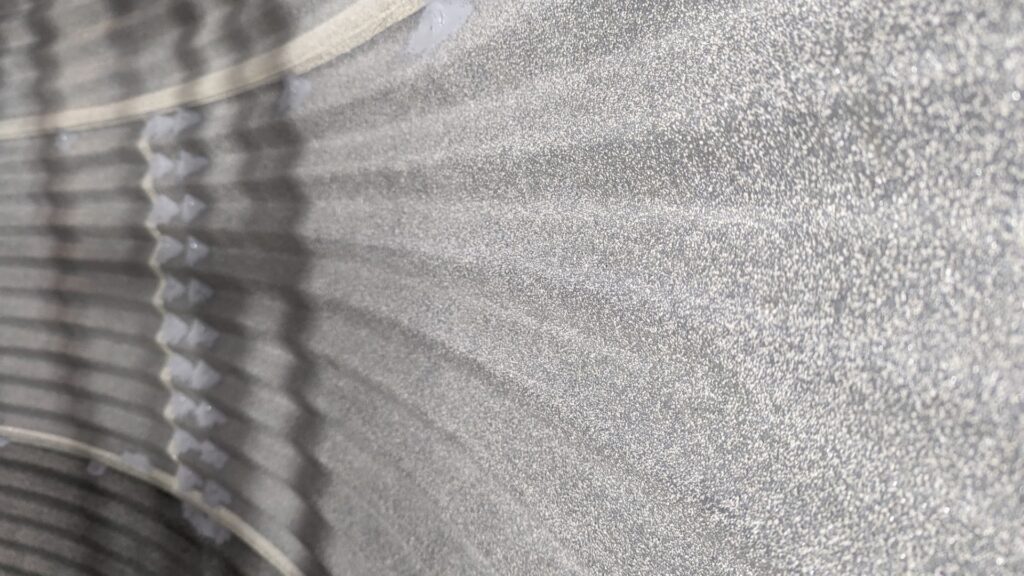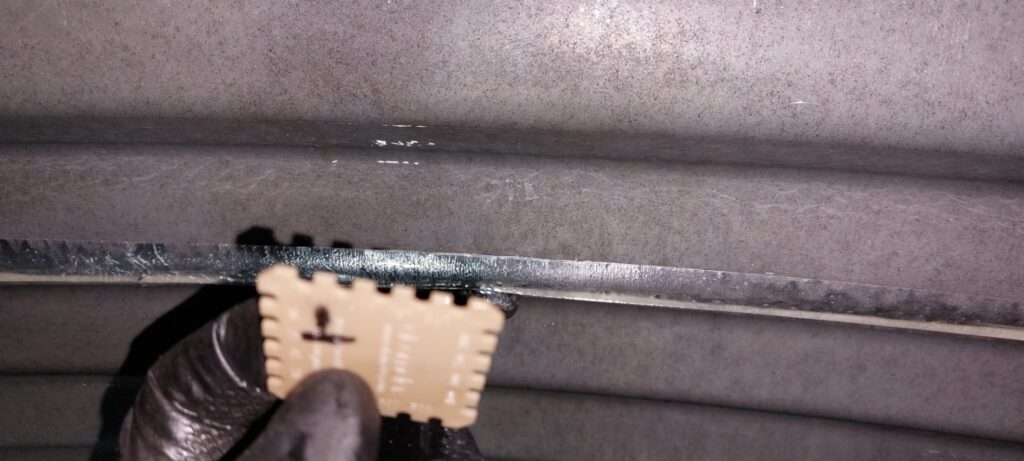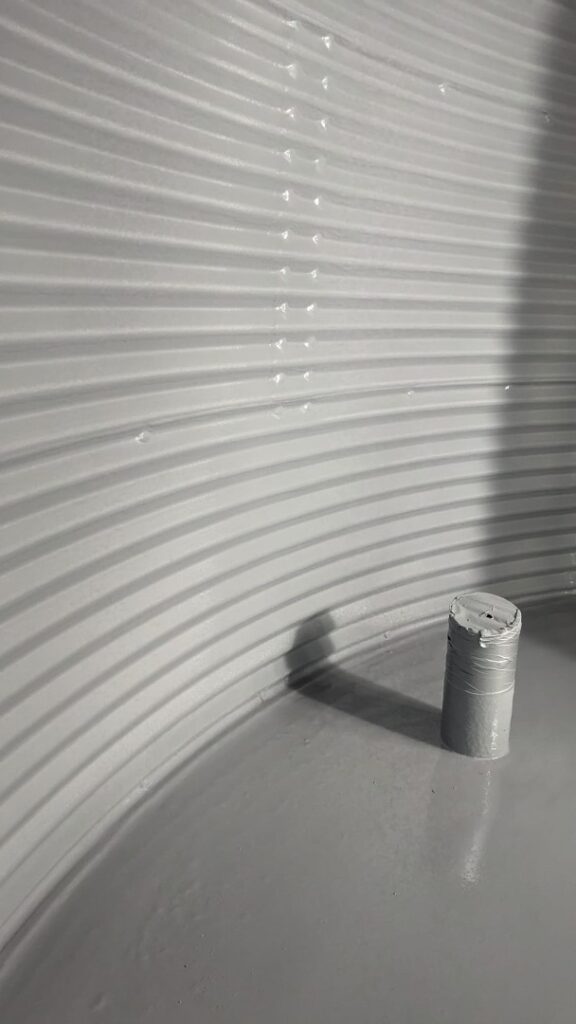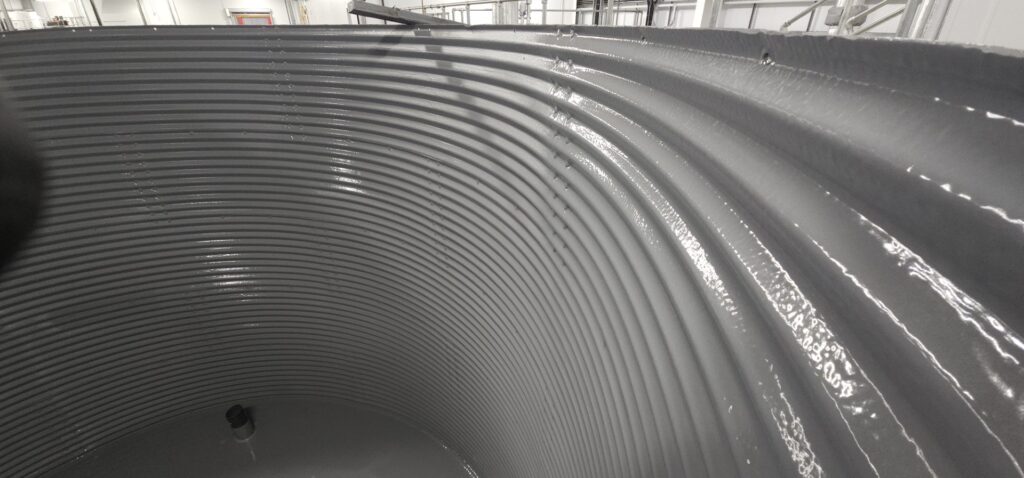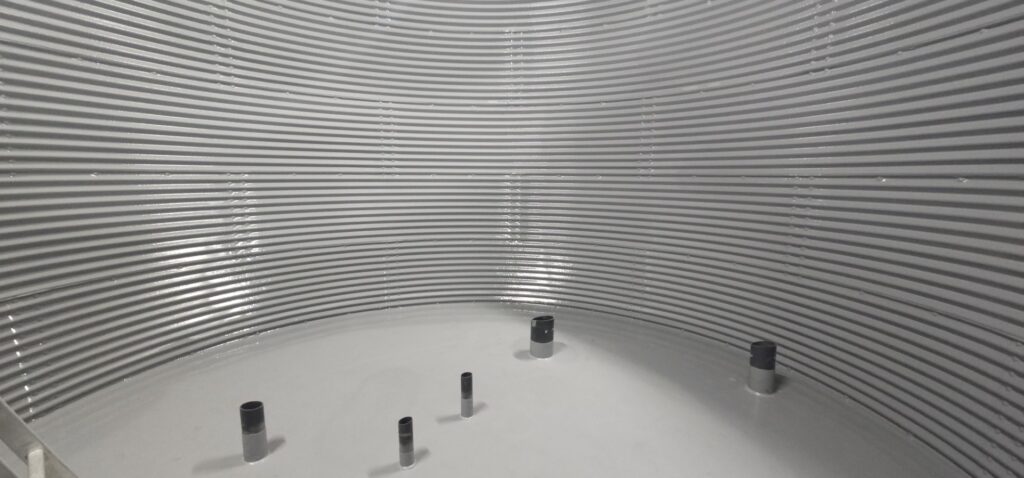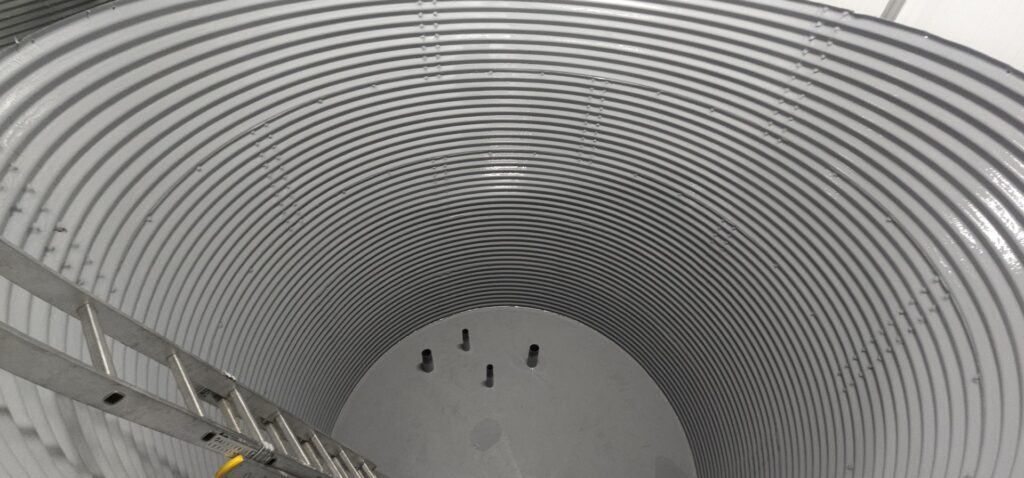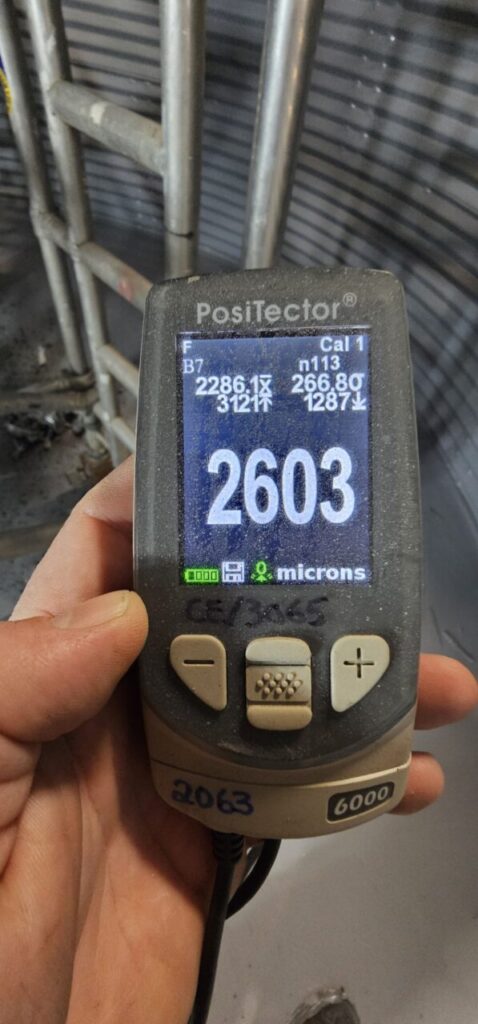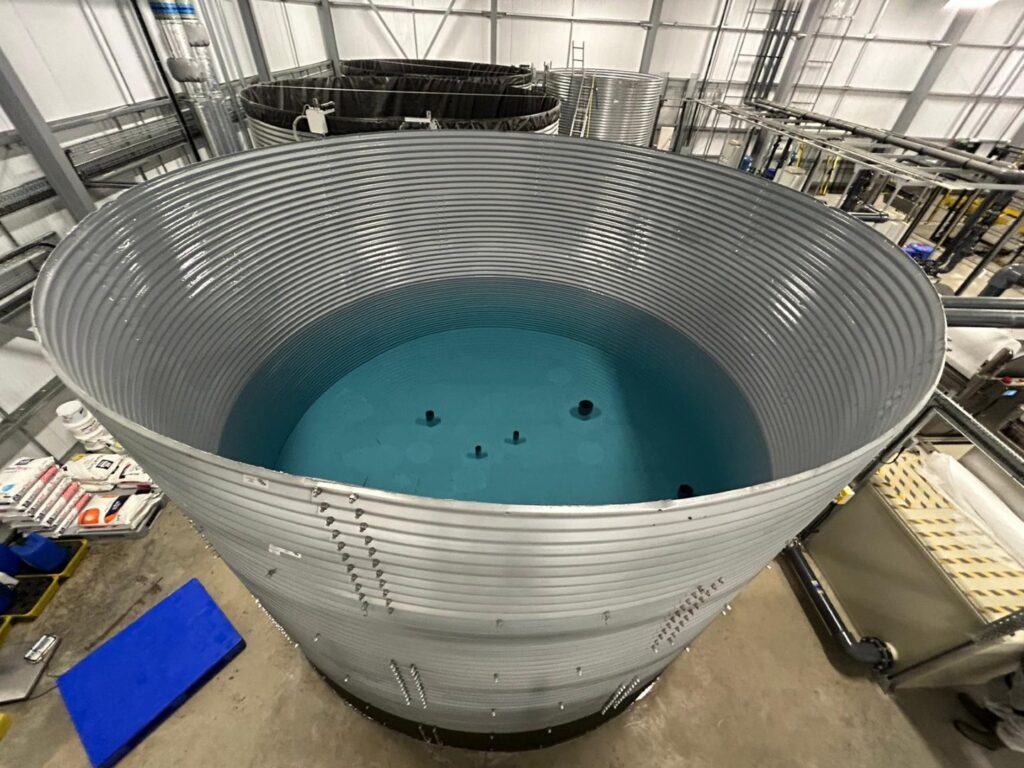THE SOLUTION
We proposed the removal of the existing linings and application of a food safe polyurea tank lining in the form of Versaflex FSS 45DC FDA approved pure polyurea.
Versaflex FSS 45DC is FDA approved for direct food contact, making it a quite unusual polyurea tank lining.
The reason we proposed a polyurea tank lining material is that the bolted and sectional nature of this type of tanks makes them susceptible to movement between the panels during emptying and filling, meaning that to ensure fluid tightness we felt this would best be served by a highly elastomeric polyurea tank lining .
Initially the existing tank lining was cut out and removed.

